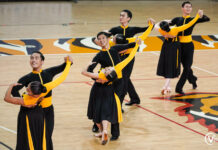BACK in the 1970s, chess was not the only board game that Thomasians were interested in.
The immense popularity of the Game of the Generals likewise fascinated the Thomasian community.
As proof of this, the first UST Game of the Generals Tournament, which was sponsored by The Varsitarian in cooperation with the UST Coop Restaurant, opened on July 7, 1974.
The Game of the Generals, or Salpakan, is a board game where two players pit their careful thinking abilities to masterfully guess their opponent’s pieces and try to put them out, much like in chess.
The game was so popular back then that even an inter-scholastic meet was held annually.
The first UST Game of the Generals tournament was formed to select the next team to be fielded in the inter-scholastic division.
Schools such as the Mapua Institute of Technology, De La Salle University, University of the East, Far Eastern University, University of the Philippines and San Sebastian College were among the universities that regularly participated in the men’s inter-scholastic meet.
On the other hand, Holy Spirit University, St. Theresa’s College, UE, Maryknoll (now Mirriam College) and Adamson University made up the ladies’ division of the inter-scholastic tournament.
The meet also held the distinction of being the first all-student tournament (elementary, high school and college) to be held in a university.
Highlight of the opening rites was the attendance of Game of the Generals inventor Sofronio “Ronnie” Pasola, who gave an inspirational talk.
Pasola, along with former UST Coop general manager Monico Yadao, executed the ceremonial first moves.
Cesar Sanchez, then a sophomore Pharmacy student, bagged the first UST Game of the Generals title, besting other finalists from the original 64 entries in the tournament.
Sanchez posted a 13-point winning score despite losing once to Melchor Chan and splitting a score with Patricio Yañez.
Other finalists were Faculty of Arts and Letters students Dominador Torres and Ed Fernandez.
The Philippine-patented tournament was divided into four divisions in the elimination round with each division having 16 players.
The participants played in a round-robin system where the top seven players in the group advanced to the semi-final round.
In the semi-final round, the 28 qualifiers were divided into two groups. The same system of play in the elimination round was applied.
The top five players from those groups composed the magic 10 who later disputed the prizes at stake. Dexter R. Matilla

















